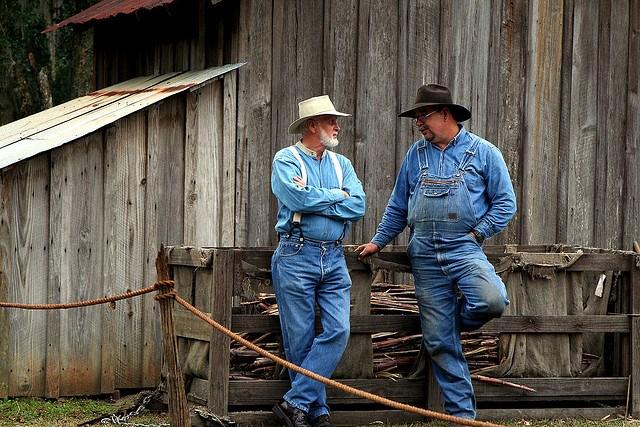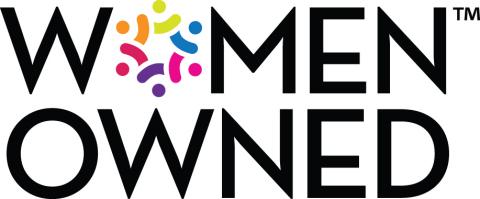In Maryland, Oceana Study Reveals Fraud in the Land of Crab Cakes


Maryland crab cakes are as important to Baltimore’s heritage as Hairspray, the Star Spangled Banner and Orioles baseball. In fact, many would say a visit to Maryland would be lacking without sampling them, whether you are vacationing on the Eastern Shore or in the DC area for a business meeting. Restaurants such as Phillips Seafood, Obryckis and Faidley’s have built an enduring business thanks to this local specialty.
The blue crab, which enjoys the reputation for making the tastiest crab cakes, is one of the most treasured resources to come out of the Chesapeake Bay. The past 30 years however, the blue crab, along with other local species, has been threatened due to pollution and over-harvesting. Local conservation efforts have helped stall the blue crab’s demise, but in the meantime, many food processors and restaurants have tried to compensate in creative ways.
And as a recently released Oceana study has revealed, we are not talking about the culinary no-no of using too much breading. Almost 40 percent of crab cakes tested in the survey revealed DNA evidence of fraud in the crab industry.
During the 2014 Maryland crab season, Oceana representatives collected and tested 90 crab cakes from 86 various restaurants in Baltimore, Annapolis, Washington DC and throughout the Eastern Shore. The non-profit found that 38 percent of the crab cakes were mislabeled. Instead of the main ingredient being the famous local blue crab, DNA analysis revealed that many of the crab cakes were made with imported crab, several species of which have a reputation for hardly qualifying as sustainable seafood.
Because not all of the restaurants actually make their own crab cakes, Oceana did not call out any of the restaurants publicly. A representative from Oceana explained to me that seafood fraud can happen any time in what has become an increasingly complex seafood supply chain. The depressing statistic should not be that surprising. Phillips, for example, uses its brand to market canned crab that can sometimes be found on the west coast. Buyer beware, however, since usually that crab has been sourced from Indonesia. But in Phillips’ defense, they are not marketing that product as “Maryland blue crab.”
But Oceana found that the mislabeled crab cakes carried the moniker “Maryland” or “blue crab.” Most of the falsely labeled crab was from the Indo-Pacific region, while a small portion was found to have come from the Mexican Pacific coast. In addition, improvements in the Chesapeake Bay’s environmental stewardship has earned the Maryland blue crab a “best choice” or “good alternative” on most seafood guides, while half of the other species detected in Oceana’s testing are marked as “avoid” on those same lists. Furthermore, consumers are overpaying for a dinner that cost them top dollar: $15 to $30 per crab cake is the price of what these delicacies go for at most restaurants.
“When you’re paying a premium for a particular product, that’s exactly what you should receive,” says Duston Cranor, Communications Director of U.S. Campaigns at Oceana. “Whether you’re purchasing local blue crab for the taste or simply to support the local community, consumers need to know that they’re getting what they’re paying for. Tracking crabs and other seafood from the boat to your dinner plate is the only way to ensure that it’s safe, legally caught and honestly labeled.”
Oceana has completed similar studies revealing fraud in the general seafood industry as well as with shrimp. As a result of all of these studies, Oceana has implored the seafood industry to increase traceability standards so that all fish and shellfish in the United States is sourced legally and responsibly.
Image credit: Kathleen Conklin
Biomimicry: Mining Nature for Ideas


Editor's Note: This post originally appeared on the ASU Global Institute of Sustainability blog. By Prasad Boradkar
A short five-minute walk takes me from my suburban home in south Phoenix to the Sonoran Desert, from the highly standardized and manufactured human-made world into the somewhat wild and undomesticated natural world.
Satellite views show stark differences between the two landscapes: rectilinear, hard lines divide the land inhabited by people, while meandering, unrestrained territories mark the land inhabited by all other creatures. We have, by design, created in contrast to the natural world an artificial world of products, buildings and cities.
Philosopher Richard Buchanan describes design as “conception and planning of the artificial.” Using these processes of planning, we have created everything from tiny paperclips to enormous jet aircraft, from the smallest dwellings to the largest metropolises. And though these things are made of such materials of human creation as chrome-plated steel, aluminum and reinforced concrete, they are all ultimately extracted from the natural world. From the natural emerges the artificial.
But what if we were to extract from the natural world, not ore and minerals, but innovative ideas and creative solutions? Enter biomimicry. Described as “the conscious emulation of nature’s genius” by Janine Benyus, author of the seminal book on the topic, biomimicry does exactly that. It is an emerging discipline dedicated to mimicking strategies and principles of the natural world to develop sustainable solutions to human problems.
Evolution as a design process
One of the most cited examples of biomimicry is Velcro. Invented by Swiss scientist Georges de Mestral, this system of attachment was inspired by the burdock seed that uses its hooks to attach itself to the coats of roaming animals as a means of travel. This natural Velcro is the burdock plant’s design strategy and mechanism of seed dispersal.
Plants and animals adapt to the conditions in which they live through unique and local strategies that have been perfected over millions if not billions of years. Processes of evolution can be seen as processes of design — iterative, based on trial and error, and often ingenious.
As I walk into the Sonoran Desert, I am surrounded by organisms that have adapted to the arid conditions of the ecosystem in which they live. The saguaro cactus, for example, has numerous strategies that it deploys, not to combat the extreme heat, relentless sunshine and limited water supply, but to work with these conditions. Its pleated body expands to absorb moisture, and contracts as it uses up this precious resource.
For added benefit, these pleats also offer shade. And because it is impossible to have too much shade in the desert, the spines perform a similar function by creating a lattice of shadows on its surface while also protecting the cactus from predators. Its sap-green body uses every square inch of that surface for photosynthesis. Lying hidden just under the ground is its network of roots, eager and ready to start absorbing moisture when it rains.
The cycle of life
According to the National Park Service, the average life of a saguaro cactus is 150 to 175 years, and at times some might live 200 years. However, the artificial things that design creates often live extremely short lives. The Environmental Protection Agency estimates the average life of a mobile phone in the U.S. to be approximately 18 months.
In 2005, writes Giles Slade, more than 100 million mobile phones were disposed in the U.S. In addition, a report from Nokia revealed that only 3 percent of users recycle their phones. What happens to the ones that end up in the landfill? Lead, cadmium, mercury, lithium and a host of other substances that are toxic to the soil, ground water and human health are likely to leak out of the devices.
What happens to a saguaro cactus when it has lived its life? Under the forces of photo- and biodegradation it slowly starts to disintegrate. All the water stored in its tissues oozes out, as an offering to other desert creatures. In its death, it supports other life. Over time, the saguaro disappears from the landscape, leaving little trace of its existence. The components from a cell phone – circuit boards, screens, plastics – may take multiple human lifetimes before they start degrading. What if our products are made from materials and technologies that, like the saguaro, vanish when their useful lives are over?
Learning from nature
Maybe we can learn about waste management from nature, where one organism’s refuse serves as another organism’s raw material. An ecosystem does not need landfills for animal droppings, decaying fruit or dead creatures. It has dung beetles, microbes and vultures that will gladly take care of it all.
Biomimicry can help us in carefully observing and learning from organisms and ecosystems so that we may create more sustainable solutions to address our most complex problems. Biomimicry can serve as the bridge that links our natural and artificial worlds.
Let us mine nature for ideas, not materials.
Senior Sustainability Scientist Prasad Boradkar is co-director of the Biomimicry Center and director of InnovationSpace, teaching students how to develop products that create market value while serving real societal needs and minimizing impacts on the environment. Boradkar is a professor in The Design School, Herberger Institute for Design and the Arts, at ASU.
It’s Certified Pre-Owned: No, Not the Car, the iPad


By Wendy Gordon
Millennials, according to Goldman Sachs, are driving the "sharing economy." If they're into driving cars, they share rather than own. The must-haves for previous generations aren't as important for millennials. They're putting off major purchases, or avoiding them entirely.
So, what about other must-haves: Will they purchase used phones with the same verve as they share cars?
Cars cost a lot -- to buy, to maintain, even to house -- which may explain the growing popularity of car sharing. It's certainly not the environmental benefits, I'm afraid, significant as they may be. According to transportation research, car sharing has taken between 90,000 and 130,000 vehicles off the road -- and avoided as much as 750,000 metric tons of carbon emissions.
If we get into certified pre-owned gadgets like we're getting into car sharing, what could the impact be?
An estimated 140 million cell phones end up in landfills each year. With those cell phones go 4.7 tons of gold (worth $56 million) and 49 tons of silver (worth $8.4 million). And don't forget the 80,000 pounds of lead, a known neurotoxin, that leach from landfilled electronics into drinking water each year. What's the price of brain damage?
But electronics recyclers are reclaiming some of those tossed electronics for reuse. Gazelle has recycled over a million devices so far, saving enough energy to power almost 2,000 homes for a year. If we recycled all 140 million cell phones going to landfills each year, we'd save enough energy to power almost three-quarters of a million homes.
I just bought a certified pre-owned iPad from Gazelle through PIPsRewards. It's as good as new, and a whole lot better, at least in my eyes. It cost much less than a new one, and I earned a bunch of Positive Impact Points for choosing the pre-owned model.
What's more, I earned more PIPs and got paid $75 for turning in my old iPad to Gazelle. I didn't get as much for it as I might have, because the glass had broken. But all told, I got the "new to me" certified pre-owned for almost half the price of a new one.
Cell phones and other gadgets cost a lot less than cars. And shiny new features make upgrading nearly irresistible. We trade in phones on average about once every 18 months, faster than it might take to finish a jar of peanut butter.
My certified pre-owned iPad is shiny and works like new. It cost less and I got it within a few days rather than the week it can take to order a souped up new one. And I got reward points with it. Funny, the points make me feel just a little righteous about my choice -- that my pre-owned is not just good as new, it's better. There is something to that, right? I guess it's what they call loyalty. So thanks Gazelle, I'll be back. And I'm telling my friends.
Image credit: Flickr/Sebastien Wiertz
Experienced entrepreneur and pioneer in the conscious consumer movement, Wendy is founder and CEO of ‘Positive Impact Points’ or PIPs Rewards. An award-winning platform created by 3P Partners, a Certified B Corporation, PIPs leverages the power of points, smart tools and games to record and reward daily life choices that deliver personal and planetary benefit. Wendy also co-founded Mothers & Others with Meryl Streep in 1989 and originated the Green Guide, which was acquired by National Geographic in 2007. She serves on multiple boards including Rainforest Alliance, Rockefeller Brothers Fund, Green Sports Alliance and the New School/Lang College Board of Governors.
California Imposes Statewide Mandatory Water Restrictions


This year California has seen the lowest snowpack ever recorded, which was a disaster for the winter ski tourism industry and poses dangers of wildfires this summer and fall. But the dry winter has also exacerbated the state’s ongoing drought crisis. To that end, Gov. Jerry Brown issued an executive order that he said is necessary in order to make California drought resistant.
The governor made the announcement while visiting a California Department of Water Resources snow survey in the Sierra Nevada Mountains at Phillips Station, located in El Dorado County near the Nevada border. "Today we are standing on dry grass where there should be five feet of snow. This historic drought demands unprecedented action," Gov. Brown said.
The executive order calls for increased water conservation, increased enforcement, a streamlined state government response and investment in new water technologies.
Many of the water conservation measures make logical sense. Gov. Brown ordered that 50 million square feet of grass lawns be replaced with drought-tolerant landscaping. Consumers could benefit from a temporary rebate program that would allow them to replace older, water-hogging appliances with more water-efficient models. School campuses, cemeteries and golf courses would have to make cuts in their water consumption. New homes and developments will also be banned from using potable water for irrigation landscaping unless water-efficient drip systems are installed.
“Every Californian should take steps to conserve water,” Gov. Brown said in a press release, an obvious statement that will irritate many Californians. After all, many have already cut their water usage, as leaders and residents of Los Angeles would say, and for good reason: The city uses less water than it did 30 years ago — with 1 million more people added to its population.
The order also requires local water management boards to change their fee structures in order to promote more water conservation. Water agencies will be penalized if they do not share data on their groundwater supplies with Sacramento, and these local boards will also have to report their water usage, conservation measures and enforcement actions on a monthly basis.
With some analysts suggesting the state has only one year of water reserves left, the governor’s executive order also urges state agencies to make decisions at a faster pace (with the drought two years in the running, it is head-scratching to think these agencies could not have made faster decisions in the first place). Streamlined permitting, simplified review and approval processes for voluntary water transfers, and relocation assistance to families in communities where wells have run dry are among the directives the governor outlined in the executive order. Finally, the California Energy Commission is tasked with developing incentive programs that will bring water technology initiatives faster to market.
Californians, who overall are among the most energy- and water-efficient citizens in the United States, need to prepare themselves for this new normal. What is most worrisome is the drought’s impact on the state’s economy, which only recently has emerged into recovery from the 2007-2009 housing and fiscal crises. TriplePundit readers have sent emails to me saying they may consider moving out of the state within a year if they are not convinced the state is serious about developing a solid long-term water plan. Republicans, of course, while generally supportive of bolstering California’s water system, are quick to point fingers at Democrats; in fairness, however, no leader has really taken on an ambitious, long-term approach to California’s infrastructure since Gov. Brown’s father, Pat Brown, was the state's governor from 1959 to 1967.
And while the threats to the state’s water supply should worry all residents, many will question why this executive order largely singles out residents when agriculture consumes 80 percent of the state’s water.
Image credit: Leon Kaye
Pressure Builds on Holdouts as More Companies Ditch ALEC


There’s an old joke about two campers who are awakened by the sound of a bear rampaging through their campsite. The first camper gets out of his sleeping bag and immediately begins lacing up his running shoes. The other camper sits up and asks, “What are you doing? You can’t outrun a bear.” The first camper, without missing a beat, replies, “I don’t have to. I only have to outrun you.”
I thought of that joke when I heard the news about BP dropping their affiliation with the American Legislative Exchange Council, commonly known as ALEC. I suppose the bear in this case would be the opinion of the public as to who is the least environmentally responsible organization in the world.
The oil giant announced on March 23, that it would not be renewing its membership in the bill mill, a group that writes legislative scripts in the form of model legislation for state and federal legislators who might be wondering what new legal advantages those with the deepest pockets might be seeking. The group primarily ghost-writes bills that favor the interests of fossil fuel companies and other major polluters. BP had been, as recently as 2011, among the “Presidential level” donors, having provided $100,000 to the 2010 annual conference.
Among those remaining on the board of the group are Koch Industries, Exxon-Mobil and Peabody Energy. A number of board level-members including Walmart, SAP, Coca-Cola, GlaxoSmithKline, Kraft Foods, Johnson & Johnson and Reed-Elsevier have recently withdrawn their support for the group.
SourceWatch lists a total of over 100 companies and nonprofits that have now withdrawn from the organization.
A spokesperson for BP told the National Review that, "We continually assess our engagements with policy and advocacy organizations and based on our most recent assessment, we have determined that we can effectively pursue policy matters of current interest to BP without renewing our membership in ALEC.”
BP is the third oil company, after Conoco-Phillips and Occidental Petroleum, to cut their ties to the group. Tim Smith of Walden Asset Management told Common Cause, “Obviously BP’s decision adds pressure on companies like ExxonMobil, Chevron and Pfizer that are longstanding and ongoing members of ALEC.”
Arn Pearson, vice president of litigation at Common Cause, said that ALEC “misleads taxpayers and the IRS about its extensive lobbying activities.”
When it comes to climate change, “They are just literally lying,” Google Chairman Eric Schmidt told Diane Rehm.
Rhode Island Sen. Sheldon Whitehouse also recently blasted ALEC in a speech in the Senate chamber.
With each passing week, month and year, denialists’ credibility is literally melting out from under them, like an ice flow beneath a polar bear. As more and more record temperatures, floods, droughts and extreme weather events (including snowfall), are recorded, more and more companies recognize the inherent indefensibility and irresponsibility of this position. BP has a long road ahead, given the continued wrangling over their responsibility for the Deepwater Horizon disaster as the five-year anniversary draws near, but this move at least shows that they are not completely asleep at the wheel.
Image credit: Andy Silver: Flickr Creative Commons
Palm Oil Scorecard Shows Companies Still Have Much Work to Do


Palm oil is finding its way into more food and personal care products, with 85 percent of the global supply coming from Malaysia and Indonesia. The result has been a massive conversion of rain forests into monocrop palm oil plantations, with a devastating impact on the environment and local communities. Among the many organizations urging businesses to take rapid action on incorporating responsibly sourced palm oil within their supply chains, the Union of Concerned Scientists (UCS) has been involved in the fight against the links this raw material has with human rights violations and environmental degradation.
To that end, UCS has released its second annual palm oil report, which tracks 30 large and important companies that source a significant amount of palm oil within its supply chains. Following up on its 2014 report, the 50 year old organization evaluated these leading brands to gauge their ongoing commitment (or lack thereof) to sourcing what many call “deforestation-free” palm oil. UCS’ methodology, which graded companies on several factors such as transparency and supply chain traceability, provided results that may jar many consumers.
Consumers with a late night fast food craving may want to reconsider their purchase decisions after reading UCS’s surveys. Companies including Yum! Brands (which owns KFC, Pizza Hut and Taco), Wendy’s, Domino’s and Carl’s Jr. scored a big zero out of 100 for offering neither policies on palm oil sourcing or data about its supply chain. Starbucks, McDonald’s and Burger King barely registered any score. The only company within this sector to show any action towards responsible palm oil procurement was Dunkin’ Brands, which developed a detailed commitment to revamping its supply chain last fall.
Retailers only performed marginally better than fast food companies in UCS’ analysis. In evaluating 10 companies’ private label food products, Safeway was the only retail store chain to perform well in the survey. Whole Foods, which UCS criticized for having a palm oil policy full of vague statements, only barely edged out Walmart. Target and Costco, which overall have solid corporate responsibility reputations, were among the retail companies that UCS scored with a big zilch.
Packaged food companies overall were rated much higher than the retailers that sell their products. Nestle scored highest amongst the 40 companies included in this survey, followed closely by Danone, Kellogg’s and Unilever. PepsiCo scored relatively high, a surprise since the company has been savaged in the past because of accusations its palm oil policy was far less than robust. Lovers of Velveeta, Jell-O and other brightly colored foods including Macaroni and Cheese might want to take note that Kraft had the weakest palm oil policy amongst its competitors.
Colgate-Palmolive was the rated as most transparent and proactive within the personal care industry, mostly because UCS judged the company to have a watertight procurement and disclosure policy. The close difference in points between its competitors including Henkel, L’Oreal and P&G were based on the percentage of responsible palm oil used relative to the entire amount used within their entire supply chains.
Consumers who are confused about palm oil, how companies use it and the effects it has on people and the planet should also read bulletins issued by other NGOs, including Rainforest Action Network and WWF. The debate over how some companies are performing better than others is still ongoing, but these organizations will agree on one fact: palm oil can be sourced without the devastating impacts such as deforestation. And companies have got to clean up their supply chains and ensure their palm oil is responsibly sourced and conflict-free, or their long term business prospects are at risk.
Image credit: Energie-experten.org
Food Supply Chains and Data: Starting Sustainability Conversations


By Andrea Learned on behalf of Scope 5
As in any other business addressing sustainability concerns, so goes the food business. Water scarcity, carbon emissions and keeping records all play into the big picture and matter, a lot, for smart management decisions.
But compared with other industries, the broader context around those concerns in the global food supply chain holds even greater significance. That particular industry must see far past any single four-walled operational boundaries and instead make decisions in a complex “ecosystem” of facts, figures and conversations. That’s why the smartest food supply chain conversations today begin with data.
Harvesting information
I recently talked with Good Company sustainability consultants Justin Overdevest and Kelly Hoell about how their small- and medium-sized food industry clients manage for operational efficiencies. As they see it, one key in the evolution of these businesses over recent years has been the ability to select customized data points that matter to their specific business model in order to more nimbly gather, manage and report sustainability performance.
“When companies develop their sustainability programs, it is important that they take the time to identify the environmental, social and economic indicators that actually matter for their specific context,” Hoell advised. There are plenty of sustainability frameworks to use, like the Global Reporting Initiative, that have identified hundreds of measurable indicators. Yet, many of those indicators may end up being of little use for small- and medium-sized businesses. With regard to SMEs in the food industry, Hoell and Overdevest have found: “Prioritizing the most relevant indicators from the start, and then adding new indicators as resources allow, is the key to effective management.” Less, done well, is much more powerful than more, done poorly.
One example of dialing into sustainability business specifics would be Good Company’s medium-sized client, Fresherized Foods, makers of Wholly Guacamole. As a company that works with many long-haul distribution companies to send their product to retail markets around the country, Fresherized uses data management tool Scope 5 to examine the efficiency of its various carriers. [Full disclosure, Scope 5 is a client of mine.] After inputting the freight and logistics data into that tool, the company's sustainability manager analyzed the information to find opportunities for efficiency and cost reduction. The opportunities that emerged were so important that it led the company to create a position just for transportation logistics. That manager now coordinates all distribution and LTL (less than truck load) vendors and logistics leading to fuel, cost and greenhouse gas reductions. Talk about well-selected data indicators…
Packaging complexity
As exemplified by that one example, there can be so many moving parts in farming and the food industry that it might be easier to focus just on the direct indicators and decisions in your own business. But the wisest choice in the vast ecosystem of the food industry is actually to “look up” and notice what else is going on around you. Only then can a business see when there are ways to collaborate with others in the food industry to provide mutual benefit.
On the collaborative front, there are many things one food business experiences that can also affect others in the industry. Those might include subtle changes in weather, longer-term climate change or shifts in workforce over time (the same workers, with the same level of experience, may not be back every year/season). Concerns like greenhouse gas emissions, similarly, have incredibly complex influences to account for and which likely affect most other farms – like the context of location, management regime, and whether fields are rain-fed or irrigated. The point is: These issues come up for everyone, so discovering and sharing information to find better ways of doing things can make a lot of sense.
Once a food business does leverage their data to find their own operational efficiencies, it is then that much easier to understand the power in combining with like-focused companies to better organize or scale. The Sustainable Food Trade Association and the Organicology conference are two Pacific Northwest-based organizations that align and combine efforts of food business owners and operators around data-driven emerging opportunities.
Shipping sustenance sustainably
For all of that to take place, sharing a spreadsheet will simply not do. Not surprisingly, the developing food industry shift from spreadsheet to a tool like Scope 5 is not simply a preference for the few “techie” types who upload the data. Accessible and transparent data, for even the least tech-minded participant, has instead become the name of the game.
As the Good Company team shared, Fresherized Foods presents a helpful example of this, again: One or two people previously had the responsibility to collect and upload the data via the usual spreadsheet, and then email that around. Today, that data is entered on location (three farms in Latin America and one in the United States), right where it is gathered, and then made much more accessible to all those involved, every step of the way.
By using the Scope 5 cloud, in this instance, stakeholders can note the historical patterns and spot anomalies. They can also pull up charts on each emission source to identify and make changes. Data in a cloud makes it easier for anyone to load crucial information, for more team members (farmers to managers) to access it, for more people to see and make decisions more rapidly, to build longer-term wisdom and adjust for real-time issues (like, for instance, droughts). And, those are just a few of the possibilities.
Data-driven conversations
For farmers and the food industry, truly accessible, real-time data can start incredibly productive conversations and uncover operational efficiencies that make a huge difference. The democratization of data -- or making this everyone’s responsibility, and not just a “data team’s” -- leads to more engagement with employees, supply chain stakeholders and beyond. This means that what matters most to your particular business’s unique operations and goals will more likely be identified and addressed in a timely manner. With the help of data in this fluid form, small- and medium-sized businesses in the food industry can start and continue conversations, and compete more productively with the big guys in a mission most critical.
Image credit: Anoldent via Flickr
Andrea Learned is an author and sustainability-focused thought leadership strategist with a particular expertise in gender and leadership. Named one of Triple Pundit’s 30 CSR Pros to follow, she regularly shares her unique perspective and curates business leadership topics via her Twitter feed and blog, Learned On.
Walmart Showcases Women-Owned Companies


Last month, during the height of nationally-recognized Women’s History month, retail giant Walmart unveiled a campaign to celebrate women makers and businesses. Now, customers can shop products made by women-owned businesses donning Walmart’s newly designed “Women-Owned” logo on product packaging or in the category online.
The logo was produced in collaboration with Rouge24, a women-owned graphic design agency. The impetus behind the new labeling connects to Walmart’s initiative to provide economic opportunities for women around the world and to help women entrepreneurs succeed and grow.
In 2011, as part of its Global Women’s Economic Empowerment initiative, Walmart committed to sourcing $20 billion from women nationally and doubling what they source from women internationally by 2016.
“As the world’s largest retailer, we have the opportunity to use our scale, purchasing power and local presence to help others," said Kathleen McLaughlin, president of the Walmart Foundation and senior vice president of Walmart Sustainability, in a statement.
As an extension of this goal, the “Women-Owned” initiative will provide access to over 3,000 products in an online marketplace and within Walmart retail stores across the country.
To be eligible to participate in the new initiative and wear the new identifying logo, current and future Walmart businesses must be at least 51 percent woman owned. The vetting process includes verification from Walmart’s nonprofit partners the Women’s Business Enterprise National Council (WBENC) and WEConnect International.
During the March launch, six products were featured with the new logo, and were prominently displayed on the Walmart website. These brands included: Milo’s Tea, Jelmar CLR Remover, HMS Manufacturing Co. Hefty Wastebaskets, Goldbug Inc. Carter’s Newborn Shoes, Ariela and Associates Smart & Sexy Bra, and Ziegenfelder’s Budget Saver Pops.
According to WBENC, women-owned businesses contribute over $1.4 trillion to the U.S. economy, and women are responsible for more than 80 percent of consumer decisions made globally. The uptick in women-owned businesses is not surprising as this trend has been on the rise for the past two decades.
The National Women’s Business Council reports that women have been launching businesses at twice the rate of men and continue to produce major gains in employment and revenue.
In their white paper on this topic, NWBC highlights the following evidence to support the growth projections of women-owned businesses in the U.S. economy:
“The Guardian Small Business Research Institute projects that women-owned businesses will create 5 to 5.5 million new jobs by 2018 – more than half the 9.7 million new small business jobs expected to be created and about one-third of the 15.3 million total new jobs anticipated by the Bureau of Labor Statistics by 2018.”
By capitalizing on the trajectory of this segmented group of businesses owners, Walmart gains not only its bragging rights for goodwill practices among rising and established entrepreneurs, but also maximizes consumer recognition, loyalty and spending by highlighting these particular business’s products on the shelf.
From our understanding, the retailer’s Women-Owned marketplace is here to stay, with the badge growing in visibility across thousands of its products both in store and online.
“Through our sales, we can see trends showing that products from women-owned businesses outpace overall Walmart sales and are ahead of inventory,” Jenny Grieser, senior director of Walmart’s Global Women’s Economic Empowerment campaign, told BlackEnterprise.com. “This shows that our customers are eager to buy these products and that this initiative has helped in showcasing women-owned businesses.”
Educate Refugees or Lose a Generation


By John Fallon
How do you educate refugee children in places with a shortage of trained teachers, a lack of resources, and where school records have been lost? In the last four years, across the Middle East and North Africa, millions of young refugees have fled from their homes. And an entire generation -- millions of children -- are at risk of growing up without an education.
The threat of an educational void is becoming abundantly clear in places like Syria. More than 2.3 million children inside the country are not in school. Of the hundreds of thousands who have fled, nearly half are not receiving any education at all. In Lebanon, there are more school-aged refugees than the entire intake of the country’s public schools, and only 1 in 5 Syrian children are enrolled in school. Sadly, it’s a similar situation in Jordan and Iraq. Aid needs to reflect the new, longer-term reality of conflicts, and should include the means for providing access to education to those who are forced to establish a new life.
Abu Mohamad, a Syrian refugee, recently told his story about small businesses in refugee camps to CNN. He started a pizza delivery service for other refugees and aid workers living in his camp. “I couldn’t sit and wait for the situation to change,” he said. “We always want more for our families.” But not everyone is an entrepreneur, particularly young children – many of whom lack access to basic education. Not everyone has the necessary tools at their disposal.
Aid through education
Last month, the U.K. pledged £100 million (~US$148 million) to help support Syrian refugees with food, medical care and relief items. The U.K. Department for International Development has committed more than US$1 billion – the U.K.’s largest response to any humanitarian crisis. And USAID, between 2012 and 2015, donated $570 million to help Syrian refugees. This is all much-needed support. Given the reality of this crisis, we need to supplement these efforts. More governments, NGOs and companies can play a significant role in improving access to education in these settings.
Much as food aid often includes basic essentials needed for survival, education assistance needs to be rapidly deployable but without compromising on quality. Refugee camps and host communities need easily accessible materials and low- or no-cost tools for education that work in challenging settings. Some organizations are already leading the way.
UNICEF helped more than 375,000 Syrian children last year access formal and informal education through school construction and rehabilitation, teacher training, and provision of school materials for teachers and students. In Jordan, staff and volunteers from Save the Children are creating specialized teacher training and support programs for those operating in conflict regions. These sessions will equip teachers with an entirely new way of approaching lesson plans, homework and grading. Save the Children has also developed a database of emergency personnel for education. These experts can be dispatched on short notice to areas affected by emergencies.
All this can be done without traditional classroom tools. Teachers work from condensed, modified curriculum, written to be delivered quickly and affordably. Mobile-delivered teaching resources can be vital when communication and normal delivery methods are limited by circumstance. And there is a need for solutions for grading tests where no national marking system exists and where students lack school records.
How can businesses make an impact?
Education is often among the first casualties of sustained conflict, and all too often, the international focus simply moves on to the next conflict, leaving a massive skills and knowledge void in its wake. Children out of school are vulnerable to the influence of extremism, a growing threat in the region, as well as criminal behavior and other forms of exploitation. Many host governments are stretched to the limits in terms of their ability to absorb the influx of refugee students into schools in already-struggling education systems.
How can we make a difference? Businesses must prioritize the social impact we stand to make as major players in the global economy, and we must do so with a view to the future.
In 2015, the United Nations is examining where focus must go following the expiration of the Millennium Development Goals, and education will surely be among the priorities for the new Sustainable Development Goals. There is work to be done. I encourage all businesses to examine their core competencies — whether in logistics, product design, communications or whatever their area of expertise – that can be applied or offered to refugee communities to drive educational improvements at little or no cost.
The late professor C.K. Prahalad said: “The big challenge for humanity is to get everybody, not just the elite, to participate in globalization and avail its benefits.”
The shift in our thinking I’ve described around moving from a short to a long-term view of how we assist those in need through education, and what Prahalad envisioned, is about inclusion; it is about fairness, and it is about allowing everyone -- not just those at the top of the pyramid -- to have a chance.
John Fallon is the chief executive officer for Pearson. Click here to read about our own partnership with Save the Children, and join the conversation on Twitter at #EveryChildLearning.
ESG Disclosure: Investors' New Obsession


By Marta Maretich
Here’s a riddle: Investors are demanding them. The global business community is boosting them. Companies large and small are trying to figure out how to produce them. What are they?
You guessed it: Extra-financial performance results — the environmental, social and governance (ESG) metrics that demonstrate that a company is acting responsibly as it conducts its business. In a major shift in global attitudes toward sustainability and a more responsible role for business in society, this fast-growing area is now a major focus for businesses and investors alike.
Not new, but moving fast
The movement behind making ESG criteria for investing has been gaining ground for four decades, with pioneers like Hazel Henderson and Joan Bavaria of Trillium leading the charge. But the pace of change has recently been accelerating across non-profit, public and business sectors alike leading more investors to look to ESG when making decisions.
Several factors are driving the shift. Increased concerns about the effects of climate change are leading citizens and governments to demand tougher environmental regulations for businesses (E). Social factors (S), such as human rights abuses, are now recognized as material risks. Poor governance is widely seen as a factor in the financial crash of 2008, sparking investor demands for more information about the G in ESG. Meanwhile, evidence is mounting that shows companies that pay attention to extra-financials actually perform better in the long term.
Extra-financial and ultra-influential
All these factors contributed to making 2014 a watershed year for investment decisions based on extra-financial factors. Fossil fuel divestment was one area where investors were seen to make decisions for reasons other than financial performance.
Investors controlling billions of dollars, such as the Rockefeller Brothers, The Wallace Fund and Ben and Jerry’s, all divested their holdings in fossil fuels in an effort to combat climate change. More of this is coming. Major institutions such as museums, universities, city governments and pension funds are all feeling the pressure to divest.
Private investors are an important part of the trend with some 70 percent now expressing an interest in investing with a conscience. As a result, asset managers in many parts of the industry are climbing on board and looking to expand their expertise in what is a strong growth area of the market.
Changing attitudes to ESG in business
These trends are putting new ESG-related obligations on companies and investors alike.
For companies, there is increased pressure to track and report ESG performance, an activity that costs organizational resources and must be carefully managed for good results. Luckily, attitudes toward ESG are changing across the business world. Top executives no longer see it as mainly a reputational or branding exercise. Rather, ESG-competence is emerging as good business practice that can foster innovation, lead companies to identify efficiencies and help manage risks.
Embracing ESG reporting provides greater access to capital, too. It’s a necessity in a climate where investors will turn down deals with companies that don’t disclose well enough or don’t disclose at all.
Across the world, companies are racing to incorporate ESG into their monitoring and reporting frameworks. To help them, the Global Reporting Initiative (GRI) provides a range of resources, including this one for absolute beginners. GRI starter kit. Other groups, like the EVCA, a European group of private equity investors, have developed their own framework to help businesses disclose ESG performance.
Investors incorporate ESG in decision-making
The EVCA framework—for businesses but developed by investors—is one example of how seriously investors are now taking ESG. And there is further evidence that the investing sector is taking positive steps to get better at incorporating extra-financials into decision-making processes.
The UN-sponsored Principles for Responsible Investing (PRI) initiative has been around since 2005 and today has 1,371 signatories around the world. The PRI provides a framework for incorporating ESG concerns into investment practice as well as reporting. It now includes a climate change pledge for asset owners.
Global investors are banding together around ESG, joining groups like the Global Sustainable Investor’s (GSI) Alliance. The Alliance supports progress in sustainable investing by identifying trends and acting as a network for national groups. It has attracted important national members including Europe’s Eurosif, British UKSIF, American US SIF, Canadian RIA and the Asian region ASrIA.
Standards are also being developed to help investors compare ESG performance across companies. The CDP amasses disclosure data on climate change issues and works with investors and companies to improve performance and reporting. Today its membership includes more than 822 institutional investors representing in excess of US$95 trillion in assets. In 2014 the CDP scored over 4700 companies on climate-related performance.
Meanwhile, the Sustainability Accounting Standards Board (SASB) is establishing the materiality of sustainability issues, applying an accountancy approach to determining their value. Operating as a nonprofit, SASB makes its standards in areas like healthcare, infrastructure and renewable resources available online to investors and businesses alike.
Burdens and opportunities
Extra-financial disclosure presents both a burden and an opportunity for companies and investors. On the burden side, it takes time, resources and in some cases a profound change of attitude for companies and those who capitalize them to embrace ESG and make it part of normal business practice. On the opportunity side, the link between non-financial performance and long-term organizational health and profitability is becoming clearer. That of course leaves aside the core argument for ESG reporting: that it is a powerful tool for reigning in the damage business can do and turning its efforts to benefit in the larger sense. This is something both companies and investors should get behind.
Marta Maretich writes about impact, sustainable and social investing for Maximpact.com, a deal listing portal and information hub for the new finance sector. She is Chief Editor of the Maximpact blog.
About Maximpact: Maximpact is a free global portal for the social, impact and sustainability sectors. It operates as a secure web-based listing service that allows sustainability, philanthropy and CSR professionals, as well as entrepreneurs, intermediaries, and funds to share information about initiatives and impact investment deals, online. For more information on the platform or to review latest impact projects visit: www.maximpact.com. This article first appeared on Maximpact’s blog.